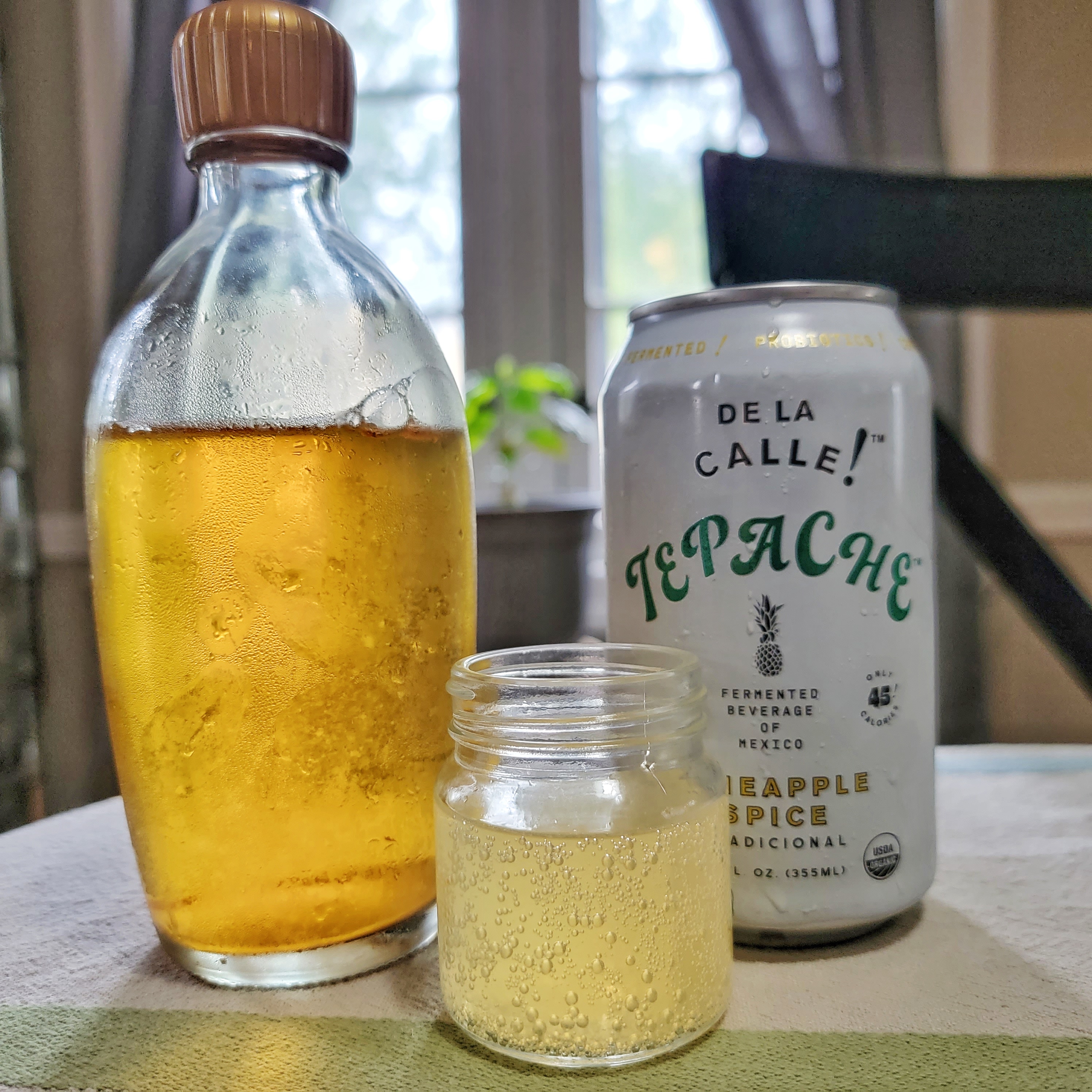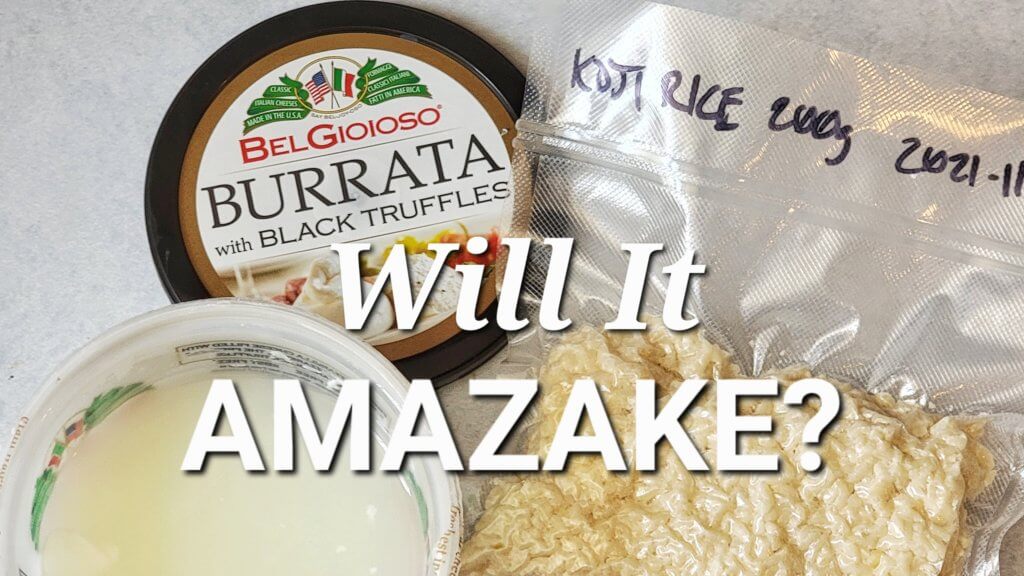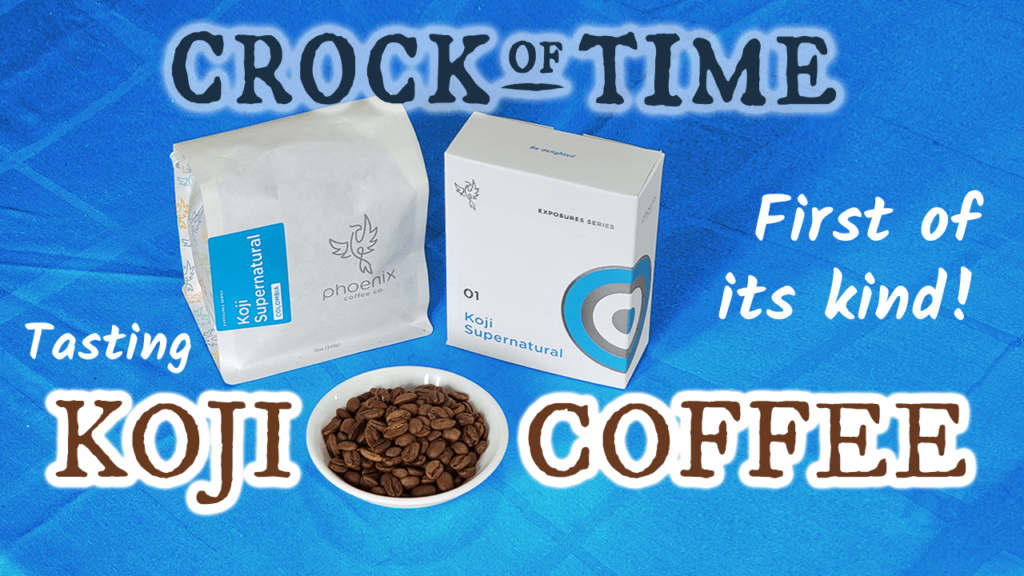Green Chili Sauce ft. Barley Koji
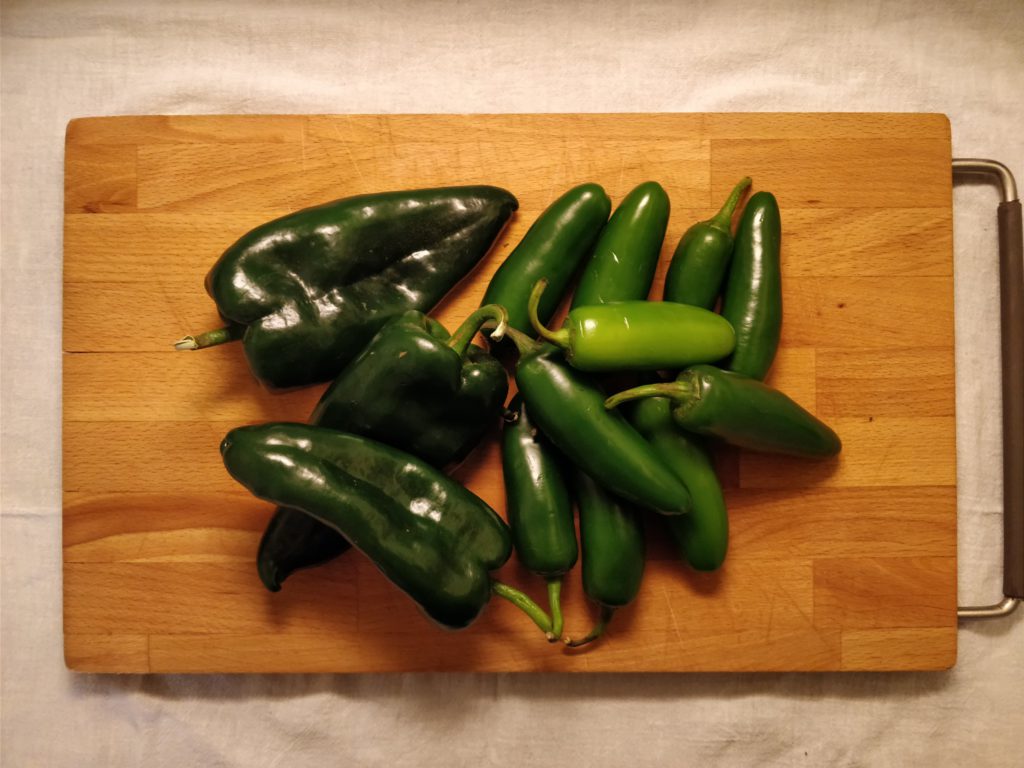
8/12–3 months later
Three full months have finally passed, and I could not wait any longer to break out this hot sauce!
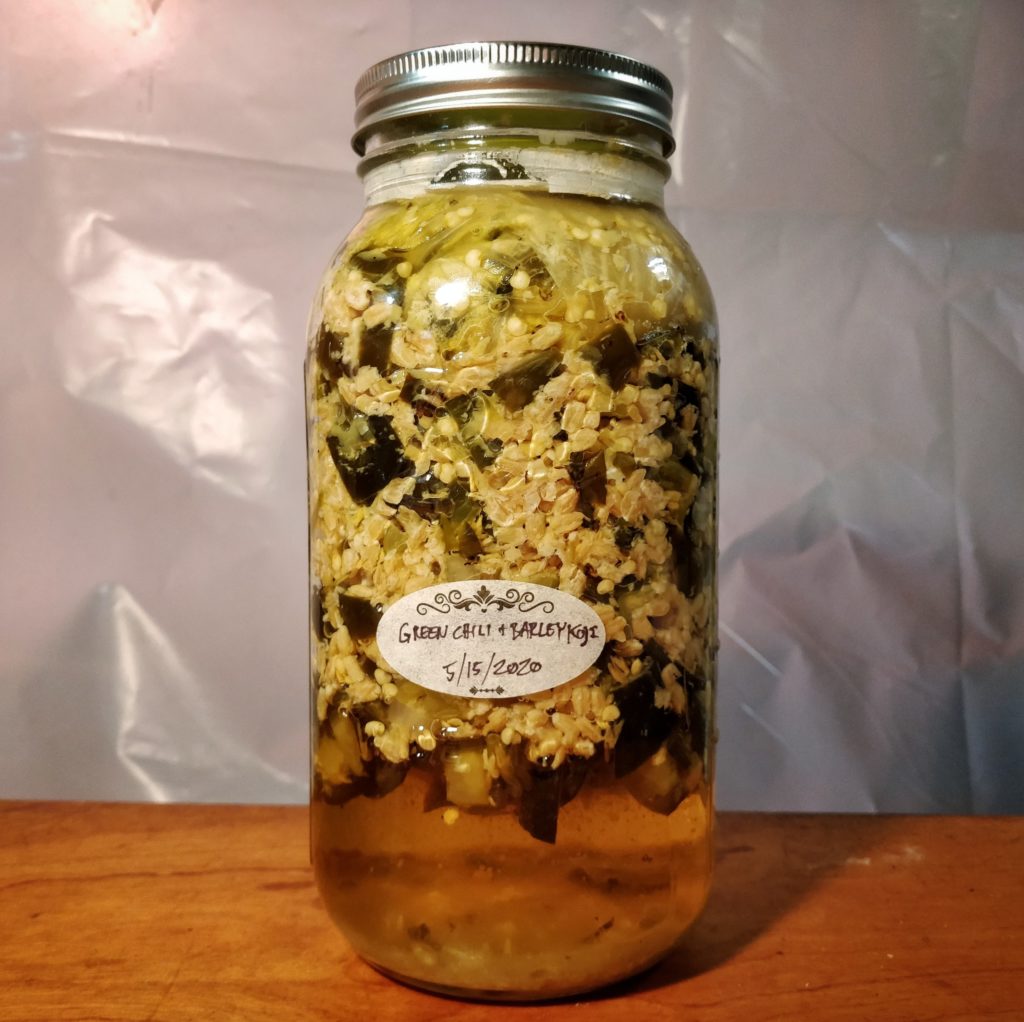
As expected, there was a thin pellicle of kham yeast awaiting me when I opened the lid, but no mold growth or off aromas. This is an indication that enough oxygen was present on the surface to support a floating colony of oxygen-dependant bacteria (which can in some cases create off flavors), but as this interesting post by Richard Preiss points out, “…the microbes that produce the film do have potential to add flavour and complexity to a ferment, like with any mixed culture.” I scooped it off and went on with my process.
That process involves three steps: strain, mill, and blend.
To strain, I simply situate a fine mesh drive over an appropriately-sized bowl, scoop out some of the solids into the drive, and then pour the rest through. This is just so that there’s no surprise splashdown.
I set the brine aside for later and then begin to pass the solids through a food mill. This separates the skin and seeds from the pulp of the chilis, and in this case also separated what remained of the bran from the barley koji. If you don’t have a food mill, you could skip this step, but you may want to pass the blended result through a fine mesh drive to remove the larger solid bits.
The results:
- 707g “pulp” of chilis and barley koji
- 738g brine
- 100g “lees”, skin, seeds, and bran
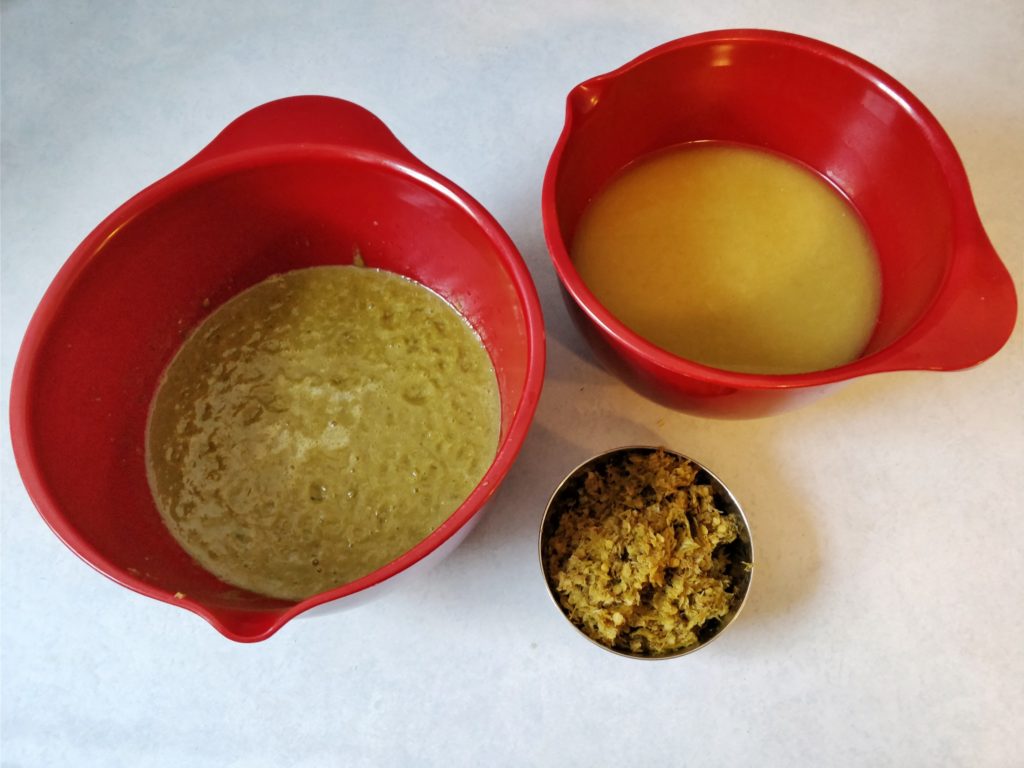
The pulp is still a bit chunky (maybe grainy would be a better word) so the final step is a whirl in a high-powered blender. The pulp alone came up right to the 3 cup mark. After blending smooth, I added a 1/3 cup of brine in at a time until I was satisfied with the consistency, 1.5 cups total (don’t worry, I weighed the remaining brine to find that I had used 366g, bringing the total weigh up to 1073g).
This is generally the point where many people would add vinegar, but I think the flavor this hot sauce can stand on its own merits. Vinegar is generally added to help stabilize the sauce; I’m keeping mine in the fridge, so I’ll have to check on it occasionally to ensure no pressure buildup (especially in the Mason jar where I put the bulk of it for storage).
I’ve labeled this “Farore’s Favor”, after the Goddess of Courage from the Legend of Zelda video game series. She is associated with the color green, as well as nature, wind, and electricity.
Tasting Notes
- Still very thick, could be stretched out with more brine or vinegar if needed
- Deep flavor with umami undertones.
- I’m glad I fire roasted the poblanos, there’s a subtle pleasant smokeyness.
- Not as much of an acidic bite as something like Frank’s or Tobasco.
- Probably about as spicy as green Tobasco sauce.
- Salt level is perfect, did not need to add any extra salt in the blending process since I didn’t dilute with vinegar.
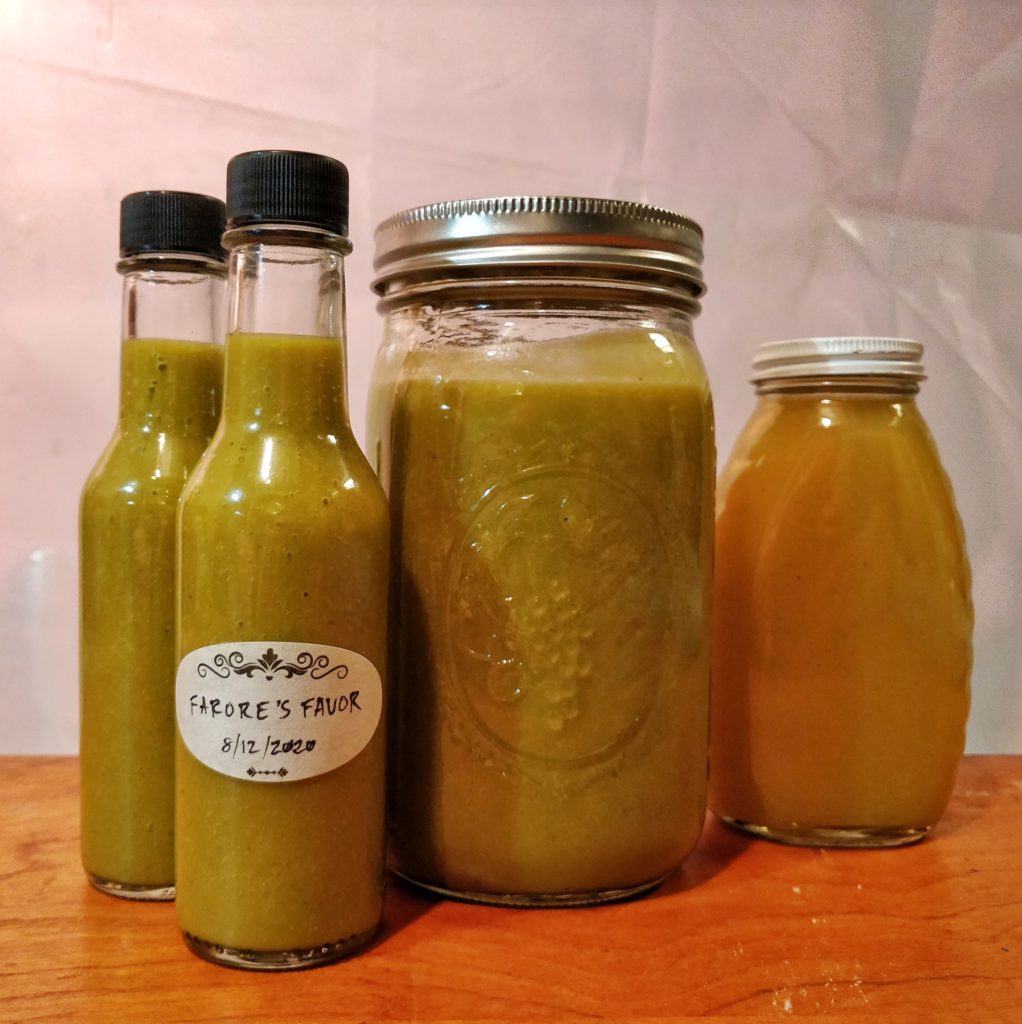
8/29
Some pressure has been building up in the jar and bottles stored in the fridge. Looks like I should definitely consider adding vinegar or pasteurizing.
9/27
I finally gave in, folks.
I’ve been burping the bulk jar in the fridge just about once a week or more, and it has yet to let up.
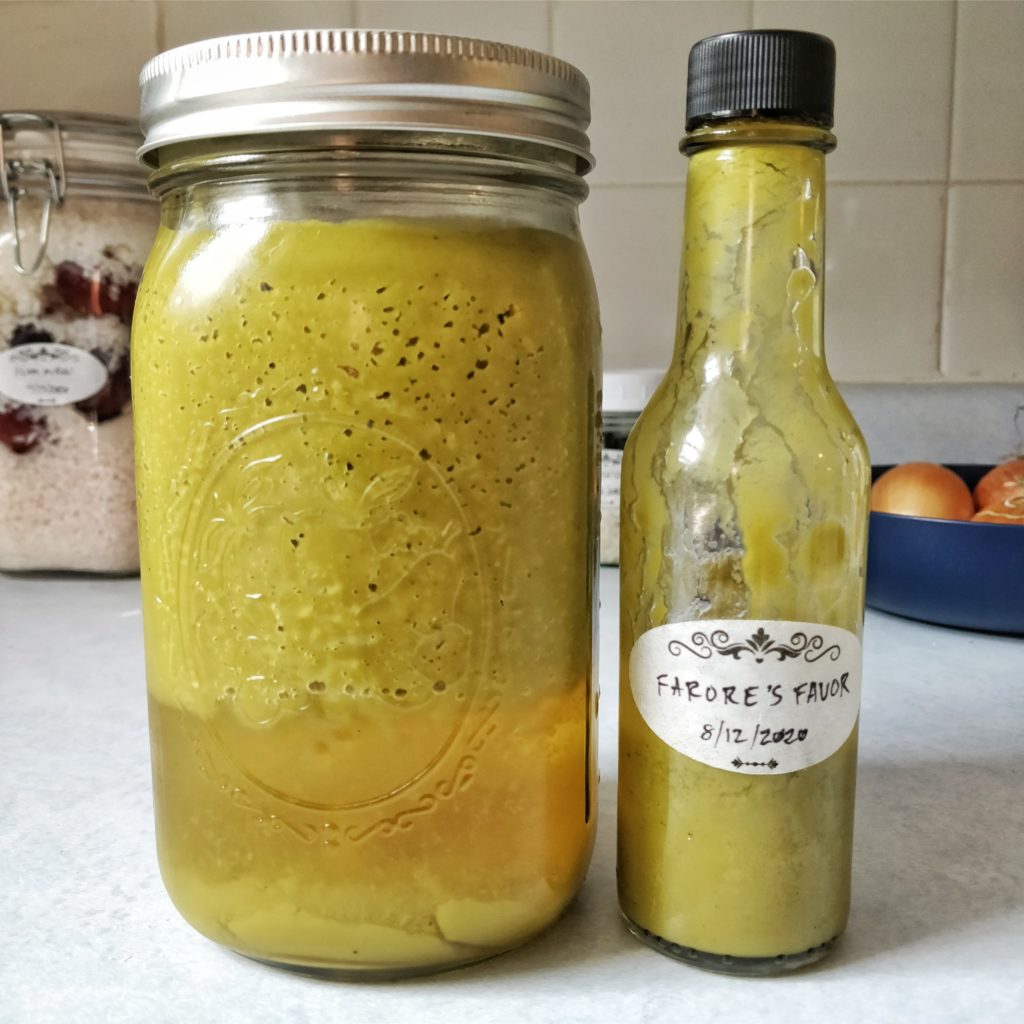
And so, I’ve decided to move forward with adding vinegar like I normally would. I don’t know why I can’t bear the thought of pasteurizing this; the heat is so mild that thinning it out more runs the risk of masking the flavor. So I did a taste test.
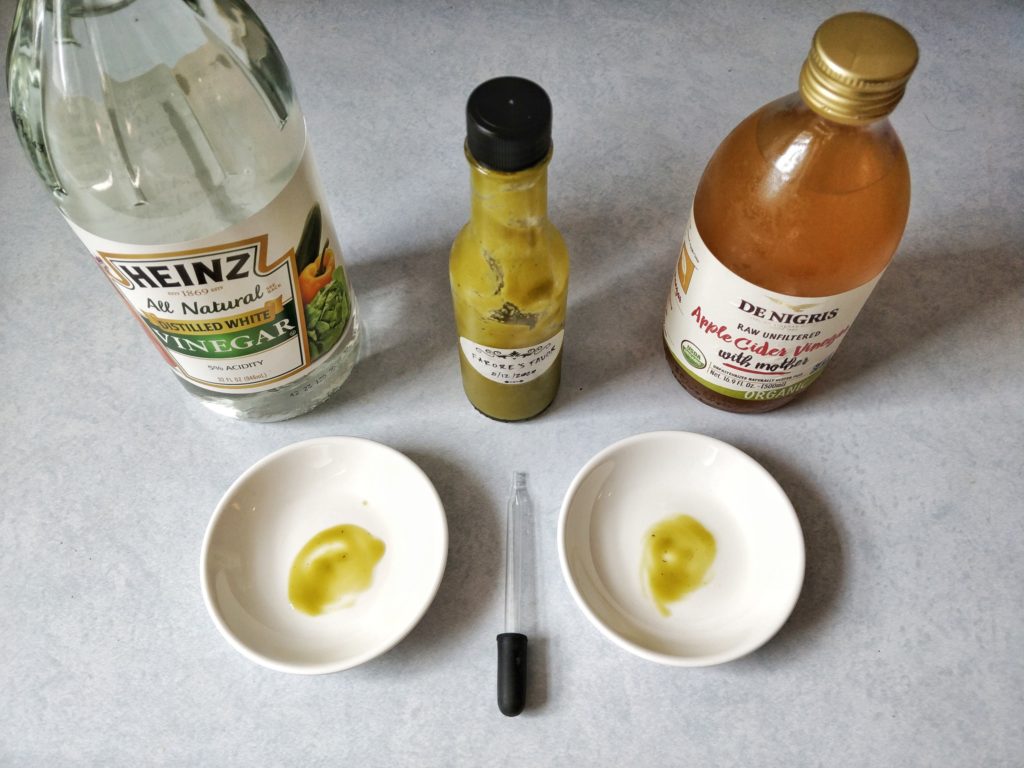
I found that the addition of vinegar did (obviously) change the taste slightly, but I felt it was acceptable. The difference in taste between the distilled and apple cider vinegar wasn’t drastic, but I decided on the distilled since the cider vinegar is raw—I don’t want the flavor to continue to acidify much further, or grow a vinegar mother in the sauce for that matter.
We will see if this halts or at least lowers the activity.
